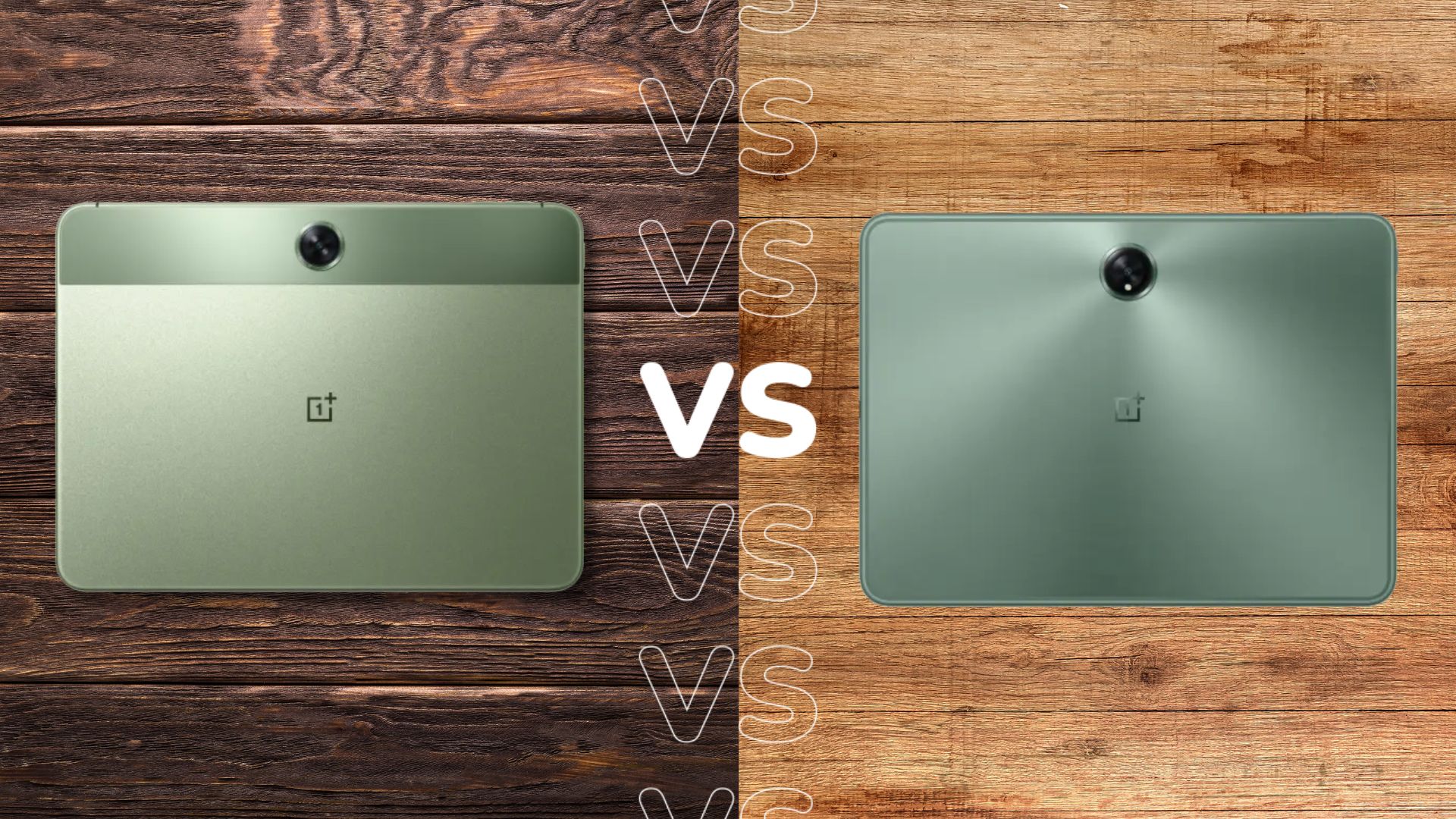Apple iPad Air vs iPad Pro: What’s the difference?
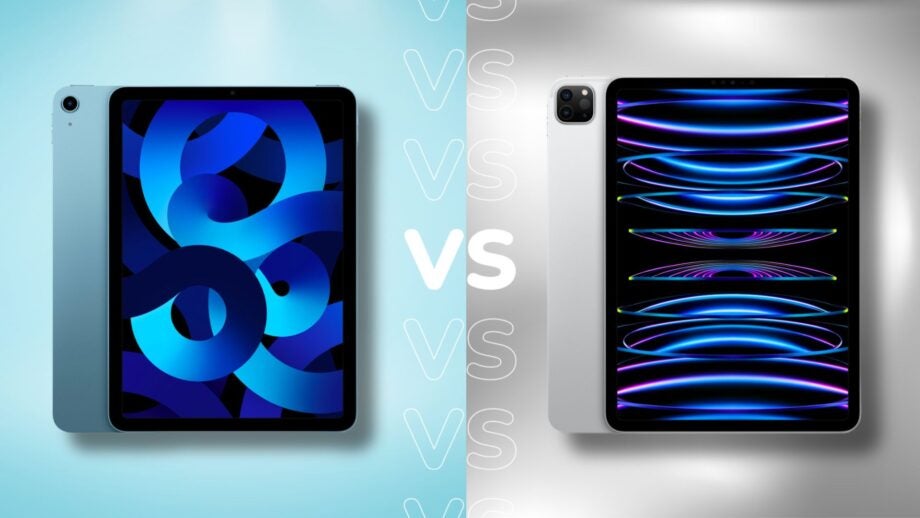
Apple’s iPad collection isn’t as simple as it once was, with various brands like iPad Air and iPad Pro thrown around, and it isn’t always clear how they differ.
To some, Air branding might suggest a lighter, less powerful version of the standard iPad. However, that’s not the case with the iPad Air, looking increasingly like a mid-way point between the regular iPad and the top-end iPad Pro.
The issue is that, even with that logic in mind, there are plenty of similarities between the iPad Air and iPad Pro collections that blur the line between the two. With that in mind, we’ve created this guide to explain the key differences between the iPad Air and iPad Pro families. We won’t be focusing on individual products here, but rather on the ranges as a whole, to explain how they differ conceptually.
It’s worth noting that we’ve tested every model of iPad Air and iPad Pro that Apple has released, so we’re well-equipped to provide the best insight into the key differences between the two ranges and help guide you on your buying journey.
Plus, if you need any more help, we’ve also got the best iPad and best tablet guides to point you in the right direction.
Pricing
Both the iPad Air and iPad Pro are very much premium options not only in Apple’s tablet collection but the tablet market at large, and both have price tags to match – though the iPad Air is slightly more affordable than the top-end iPad Pro.
That’s because the iPad Air has transitioned to become the mid-way point between the regular iPads and the top-end iPad Pro, boasting key iPad Pro features without costing quite as much. It has still steadily risen in price since its revival back in 2019 though, with the latest iPad Air starting at £669/$599, going up to £849/$749 if you want the top-end 256GB variant.
That’s still much more tempting than the iPad Pro though; Apple’s no-holds-barred tablet range has the most advanced tech and best accessory support of the entire iPad collection, but starting at £899/$799 for the 11-inch model and rising to £1,249/$1099 for the 12.9-inch model, you’re certainly paying a premium for the experience.
Design
At one time it was pretty easy to tell the iPad Pro range from the rest of the iPad collection; the tablets were not only larger at 11 and 12.9 inches respectively, but they sported a unique angular design in place of the curved chassis of other models in the iPad collection.
However, that has changed over the past few years as Apple has transitioned the rest of the iPad collection to sport the same general look and feel, complete with the same angular edges and general industrial look. That’s especially true of the iPad Air, whose screen has also grown from 10.5 to 10.9 inches over the past few years, with the latest iteration looking pretty similar to the 11-inch iPad Pro.
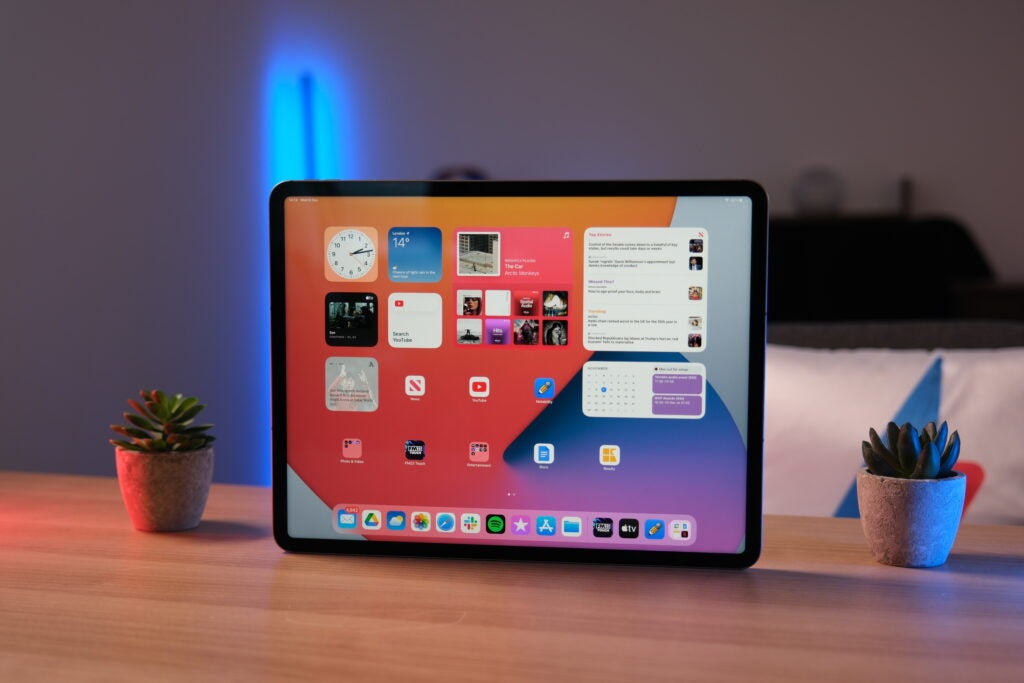
It’s not just the general look either; the iPad Air is the only other iPad to match the iPad Pro’s accessory support, sporting the same 3-dot connector on the rear panel as the iPad Pro, and there’s an area on the right side of the tablet designed to house the Apple Pencil 2 too – but more on accessories in a bit.
Despite the growing similarities between the two ranges, there are a few ways to differentiate between the iPad Air and iPad Pro. For one, the iPad Pro range is only ever available in muted tones like space grey and silver. The iPad Air range, on the other hand, leans into more colourful finishes like blue and purple.
The most obvious difference should come when you power the tablets on, with the iPad Pro range sporting the most advanced screen tech in Apple’s collection. The crowning glory of which, 120Hz Apple ProMotion tech, remains exclusive to the iPad Pro range.
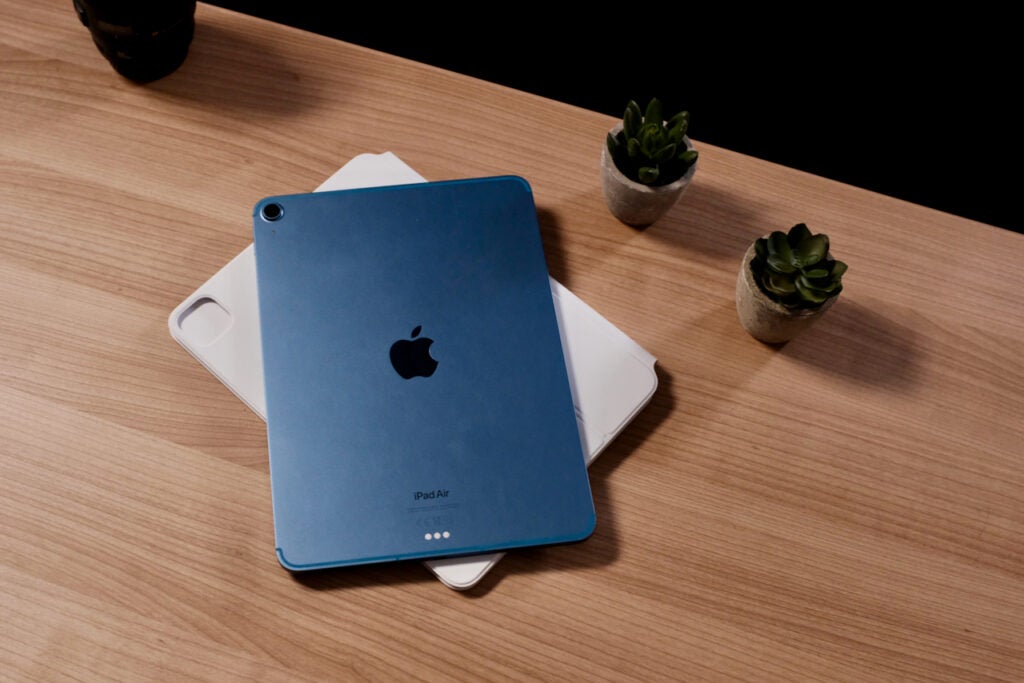
For those unaware, that means that the screens of recent iPad Pro models will look and feel smoother than most competing tablets that render at a standard 60Hz.
The difference is even more stark when comparing the iPad Air to the last couple of generations of iPad Pro 12.9, with the latter sporting truly high-end mini-LED tech to deliver inky blacks, a very high contrast ratio and impressive brightness well suited to creative work.
Performance
Performance was once an area where the iPad Pro stood head-and-shoulders above the rest of the competition. It was a clear message to consumers: if you want the best performance possible, get the iPad Pro.
That’s still the story with the most recent models of iPad Pro, sporting Apple’s desktop-class M2 chipset that not only delivers the best performance of any tablet on the market – Apple-branded or not – but enables the iPad Pro to perform some pretty cool tricks including Apple’s new Stage Manager multitasking system, powering a second display and more.
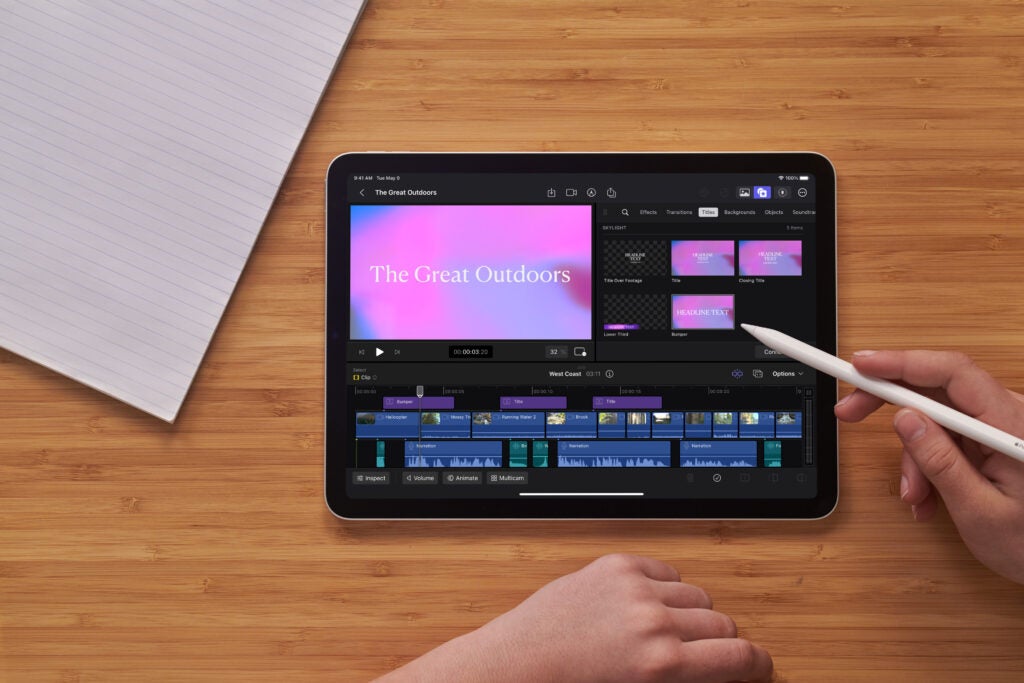
However, as with the design, recent models of iPad Air have begun to encroach on the iPad Pro’s hold on performance power. That’s not so much the case with older models of iPad Air, usually sporting the same A-series chipset of the equivalent flagship iPhone available at the time, but the 2022 model made the jump to the Apple M1 chipset.
That means that the latest iPad Air can not only perform at a similar level to the iPad Pro in terms of everyday performance, but it means that it’s the only non-Pro iPad to offer features like the aforementioned Stage Manager multitasking system.
That said, as seen in our benchmark testing, the M2 chip of the latest iPad Pro is still much more powerful than the M1 chip in the iPad Air, so if you really want the best performance possible, the iPad Pro is the one to go for. Just be sure you’ll really make the most out of that power, as you could save a pretty penny with the still-capable M1 iPad Air.
Accessories
Apple’s iPad Pro range initially set the bar for accessory support with first-party accessories like the Apple Pencil 2, which magnetically snaps onto the side of the tablet for storage and wireless charging, as well as the upgraded Magic Keyboard that provides something more akin to a traditional laptop experience, complete with a dedicated trackpad.
Combined, they make the iPad Pro a powerful laptop replacement, especially when combined with elements of iPadOS like Stage Manager.
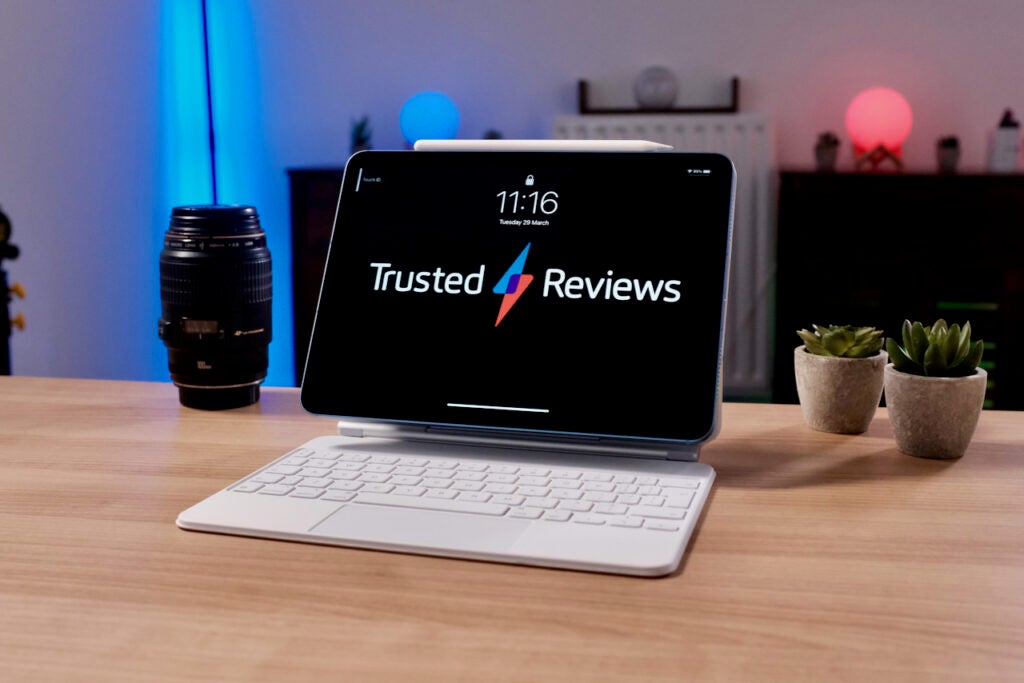
However, the iPad Air also boasts great accessory support, with the past few generations all supporting the Apple Pencil 2 while the latest iPad Air sports its own version of the pro-level Magic Keyboard, levelling the accessory playing field.
That means you no longer need to go for the top-end iPad Pro if you want a solid laptop replacement; the iPad Air, combined with the optional accessories, is just as capable.
Verdict
Both brands of iPad service different users – the iPad Air is a great work/school companion while the Pro range is designed for pro-level creatives that’ll really get the most out of the high-end tech on offer – so it’s largely down to how you envision you’ll use your iPad.
If you truly believe you’ll make use of the top-end spec on offer, be it for work or play, the iPad Pro is a worthy purchase that’ll service all your tablet needs. But for most people, the iPad Air – especially the recent M1 variant – will be all the iPad you need.



